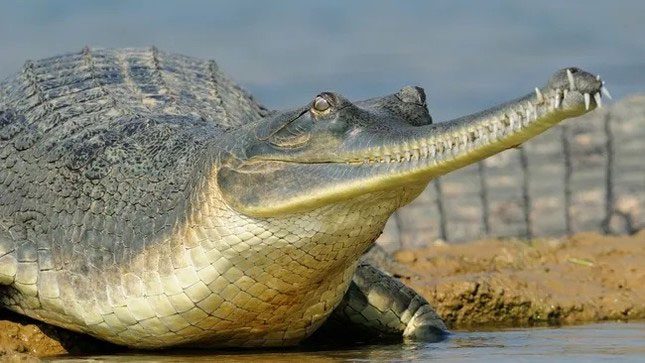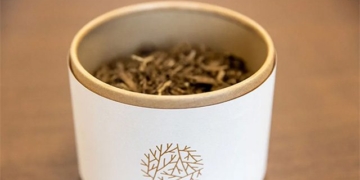The Gharial (scientific name: Gavialis gangeticus) inhabits freshwater rivers in India and Nepal. An adult male has a “ghara” at the end of its snout: a bulbous, lightbulb-shaped protuberance named after an Indian pot that resembles an onion. This peculiar bulge attracts females and helps the male court potential mates by blowing bubbles and producing a strange love song.
According to the Smithsonian Conservation Biology Institute and National Zoo, this ghara partially covers the nostrils of the gharial and functions as a sound resonator, producing a loud humming sound when the gharial calls.

The gharial diverged from other crocodile species over 40 million years ago. (Photo: RichLindie).
If the courting efforts of this crocodile are successful and a male attracts a female, they will mate. This typically occurs in December or January. In March or April, as the dry season arrives, the female digs a nest and lays about 40 eggs.
These large eggs are the biggest among all crocodile species, weighing up to 170 grams, nearly equivalent to a hockey puck. Fully grown, adults can reach lengths of up to 4.5 meters and weigh around 160 kg on average. Indian crocodiles are polygamous, as a male often attracts multiple females.
Like all crocodile species, the sex of the hatchlings is determined during the incubation period. The incubation can take from 60 to 80 days. Hatchlings stay with their mother for several weeks, or sometimes a few months, after hatching.
Although they resemble short-snouted or long-snouted crocodiles, Indian crocodiles diverged from other crocodile species over 40 million years ago. Unlike short-snouted crocodiles, Indian crocodiles do not ambush their prey.
Instead, sweeping their snouts from side to side allows them to detect vibrations in the water. Using this method, they locate nearby fish and snatch them up with their sharp teeth.
These animals are well-adapted to aquatic environments but have difficulty moving on land due to their weak limb muscles, so they must slide on their bellies to move across the water’s surface.
Gharials once thrived in large numbers in Pakistan and Myanmar, with an estimated population of around 5,000 to 10,000 individuals in the wild during the 1940s. Today, they are critically endangered due to hunting, fishing, and habitat loss, with approximately 650 mature individuals remaining. Captive breeding programs, nest monitoring, and other conservation efforts have helped increase this number from around 250 in 2006.


















































